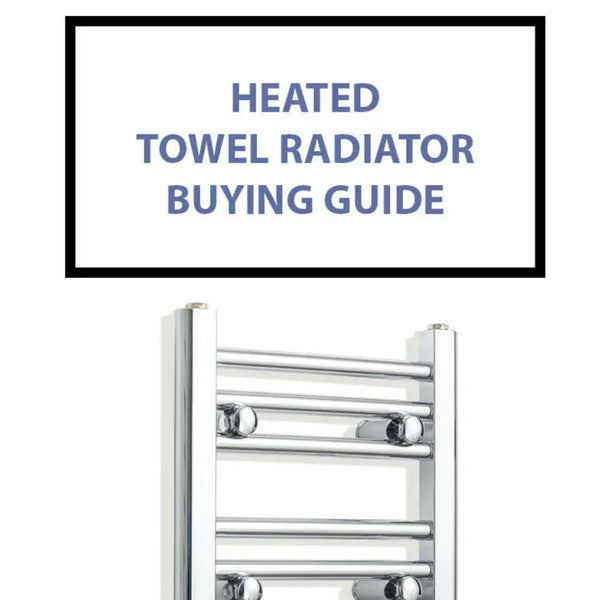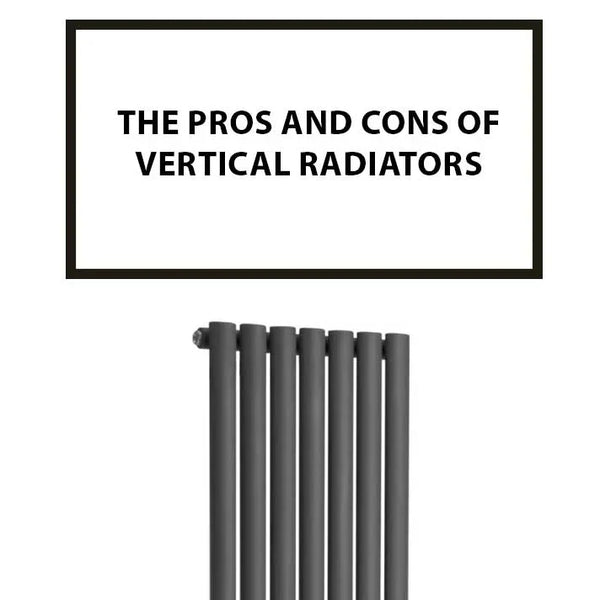Radiators vs. Heated Towel Rails: Which Is Better for Your Bathroom?
When it comes to heating your bathroom, you have two primary options: a traditional radiator or a purpose built heated towel rail. While both will warm the room, they are fundamentally designed for different priorities, and choosing the right one can have a significant impact on your bathroom's comfort, functionality, and even its running costs. It’s a common dilemma for anyone renovating or redecorating.

Should you prioritise raw heating power to make the room as warm as possible, or is the practical luxury of dry, fluffy towels more important? Do you have enough space for both? This expert guide from Elegant Radiators will break down the head-to-head comparison across the key criteria that matter in a bathroom: heating power, practicality, design, and year-round usability. Let's settle the great bathroom heating debate.
Round 1: Raw Heating Power (BTU Output)
The first and most fundamental job of any heating appliance is to heat the room. This is measured in British Thermal Units (BTU).
Standard Radiators: A conventional radiator, be it a panel or column design, is engineered for one primary purpose: maximum heat output. Its large, flat, and uninterrupted surface area is designed to radiate and convect heat into the room as efficiently as possible. For a given set of dimensions (e.g., 600mm x 1200mm), a standard radiator will almost always have a significantly higher BTU rating than a towel rail of the same size.
Heated Towel Rails: The design of a heated towel rail, with its elegant bars and open gaps, is a compromise. While it heats the room, the gaps required for hanging towels reduce the total metal surface area available to radiate heat. Therefore, its BTU output will be lower than a solid radiator of the same height and width.
The Verdict: If your absolute top priority is raw, powerful space heating for a very large or poorly insulated bathroom, the standard radiator is the winner.
Round 2: Everyday Functionality & Practicality
A bathroom isn't just a room to be heated; it's a functional space where towels are used and need to be dried.
Standard Radiators: While you can, of course, drape a towel over a standard radiator, it's far from an ideal solution. Doing so creates a thick, insulating layer that traps the heat, preventing it from warming the rest of the room. This makes your heating system incredibly inefficient. Furthermore, the paint finish on some standard radiators is not designed to cope with the constant moisture from damp towels, which can lead to discoloration or rust over time.
Heated Towel Rails: This is where they excel. They are purpose-built for this dual function. The ladder-style bars allow you to hang multiple towels neatly, with air able to circulate all around them. This not only warms the towels beautifully but dries them quickly and hygienically, preventing the musty smell of damp towels and reducing humidity in the bathroom.
The Verdict: For the crucial dual role of heating the room AND effectively drying towels, the heated towel rail is the undeniable winner.
Round 3: Space Efficiency & Design
In many UK bathrooms, space is at a premium. The design and footprint of your heating choice matter.
Standard Radiators: Compact horizontal radiators are great for fitting under a window, a traditional and efficient placement. However, this can take up a significant amount of horizontal wall space that could otherwise be used for a vanity unit or other furniture. While stylish vertical radiators exist, they are often bulky and expensive.
Heated Towel Rails: The classic vertical ladder rail is a master of space efficiency. It makes use of narrow, vertical wall space that is often otherwise wasted. This sleek, architectural look is synonymous with modern, spa-like bathroom design, drawing the eye upwards and often making a small room feel taller.
The Verdict: For modern aesthetics and clever use of space in small or awkwardly shaped bathrooms, the heated towel rail usually has the design edge.
Round 4: Year-Round Usability (The Dual Fuel Factor)
How useful is your heating choice during a damp, cool British summer?
Standard Radiators: A standard radiator is completely dependent on your main central heating system. It only works when your boiler is fired up and heating the entire house. In summer, it's essentially just a piece of metal on the wall.
Heated Towel Rails: This is where the dual fuel option becomes a game-changer. By having an integrated electric element, a dual fuel towel rail can be switched on independently of your central heating. This means you can have the luxury of warm, dry towels on a damp July morning for just a few pence, without having to heat your entire home. This flexibility is a massive advantage in the UK's variable climate.
The Verdict: For year-round practicality and energy-efficient summer use, the dual fuel heated towel rail is unbeatable.
FAQ: Radiator or Towel Rail for Your Bathroom?
Here are our answers to the most common questions to help you make the final decision.
Is a powerful towel rail enough to be the only heat source in a bathroom?
Yes, in most cases. For small to medium-sized UK bathrooms, a correctly sized heated towel rail provides more than enough heat to keep the room warm and cosy. It's crucial to calculate your room's BTU requirement first to ensure you choose a model with a sufficient heat output.
Can I just add a hanging bar to my existing radiator to dry towels?
You can buy clip-on towel bars for standard radiators, but they are not an ideal solution. The towel will be held very close to the radiator surface, which severely blocks the heat from getting into the room and can make drying inefficient. A purpose-built towel rail is designed to allow air to circulate properly.
Which is more expensive to buy?
Generally, if you are comparing two models with the exact same heat output (BTU), a basic panel radiator will be cheaper to purchase than a designer heated towel rail. You are paying a premium for the towel rail's style and dual functionality.
I have underfloor heating. Do I still need a radiator or a towel rail?
If you have underfloor heating, your room's space heating needs are already covered. In this scenario, you don't need a powerful radiator. However, a heated towel rail is still an invaluable addition. Its primary job in this case would be purely for the luxury and practicality of warming and drying your towels, a function that underfloor heating cannot perform.
The Final Verdict: So, which is truly better?
For the vast majority of modern bathrooms, the heated towel rail is the better all-round choice. Its blend of style, excellent space efficiency, and the unbeatable practicality of drying towels (especially with a dual fuel option) outweighs the raw heating power of a standard radiator. A radiator should only be your first choice if your bathroom is very large and cold, and towel drying is not a priority at all.







